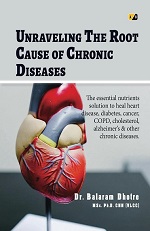Introdcution
When scientists or doctors talk about an “associated cause,” they mean a factor that’s linked to an outcome but isn’t always the main reason it happens. This idea often appears in research, medicine, and even daily decisions. For example, you might hear about certain habits or exposures that increase your risk for disease, yet they’re not the only things at play.
The term helps us sort through what might be behind events or health issues, even when the full story is complex. Understanding the difference between something that’s truly causing an effect and something that’s just related to it is key. By recognizing associated causes, you can make more informed choices—whether you’re looking at scientific studies or just figuring out what might have led to a headache or an unexpected result.
Table of Contents
Defining Associated Cause
Before you can judge if something truly causes an effect, it’s important to understand what we mean by “associated cause.” This term describes a link where two things occur together more often than by chance, but one doesn’t always directly cause the other. Recognizing this helps you spot which factors are likely playing a role, especially when science or diagnosis isn’t black and white.
Associated Cause vs. Causation and Correlation
Many studies find links between events or conditions, but not all of them are direct causes. The difference matters more than most people think, especially in fields like medicine and research.
- Associated cause points to a factor that shares a connection with an outcome, but it isn’t necessarily the root cause.
- Causation means that one thing definitely brings about another. You flip a light switch and the light turns on. That’s causation.
- Correlation just says there’s a relationship; both things happen together, but that doesn’t mean one causes the other.
Think of the associated cause as sitting between correlation and causation. There’s a link, but the story may be more complex with other hidden reasons or confounding factors at play.
Why does this distinction matter so much?
- Making decisions based only on association can lead you astray.
- Medical studies often find associations between habits and disease, but without more proof, you can’t say the habit causes the illness.
- As a critical consumer of research, you need to recognize when evidence is strong enough for action and when it’s just a starting clue.
If you’d like a deeper dive into these differences, check out this overview on the difference between association, correlation, and causation or this simple explanation of correlation vs. causation.
Historical and Philosophical Perspectives
The struggle to pin down what causes what is nothing new. Philosophers have tried to answer these questions for centuries. Aristotle created a famous system—the Four Causes—to explain why things happen:
- Material Cause: What something is made of.
- Formal Cause: The form or pattern of a thing.
- Efficient Cause: The direct source or agent that brings it about.
- Final Cause: The end goal or purpose.
This ancient framework shaped how later scientists and thinkers looked at causality. Today, when doctors or researchers hunt for an associated cause, they’re drawing on this legacy. We use these concepts to decide whether we’re dealing with a root reason, a simple connection, or something that sits in between.
Understanding how people have talked about causality gives you a richer way to spot the differences in how we use terms like “association” in science and medicine. Thoughtful research now relies on both modern statistics and classic philosophy to prevent missteps in diagnosis and recommendations.
 Photo by Pixabay
Photo by Pixabay
Associated Cause in Medical and Epidemiological Contexts
In medicine and public health, the idea of an “associated cause” pops up all the time. Diseases rarely spring from a single reason; instead, there’s a web of factors at play. Understanding the roles each one plays—whether they’re the spark, the fuel, or just a minor nudge—is key to better diagnosis, treatment, and prevention.
Etiology and Chain of Causation in Disease
The word etiology simply means the study of what causes a disease. In real life, illnesses usually happen due to a mix of causes, not one smoking gun. For example, heart disease isn’t blamed on cholesterol alone. Genetics, diet, lack of exercise, and stress can all play a part.
Think of the causes as links in a chain. Sometimes, breaking just one link (like quitting smoking) can prevent heart disease, even if the other factors stay the same. In infectious disease, it’s similar—catching the flu comes from contact with a virus, but other things like a weak immune system or being in close quarters help the illness spread.
Let’s look at how different causes can connect:
- Sufficient causes: Several factors together trigger the disease. For lung cancer, it might be heavy smoking + exposure to radon + family history.
- Component causes: Each factor is a piece of the puzzle, but can’t trigger the disease alone.
A deeper look at this can be found in this overview from the CDC: Principles of Epidemiology: Disease Causation and Epidemiologic Triad. Also, for complex health chains, you might check out Evidence-Based Causal Chains for Linking Health.
Here are some common health examples:
- Diabetes: Genetics, diet, obesity, and lack of exercise all build on each other. Control just one, and you can lower your overall risk.
- Liver disease: Alcohol, hepatitis infection, and genetics can all be involved, sometimes in combination.
- Infectious disease: Viruses like the flu rely on both exposure and body health to actually cause illness. Learn more in the Cleveland Clinic guide on Infectious Disease: Types, Causes & Treatments.
Distinguishing Associated, Primary, and Contributing Causes
Sorting out what’s the main culprit, and what’s just along for the ride is key in medicine. Here’s how they differ:
- Primary (Direct) Cause: The factor you could point to as “the” cause.
- Associated Cause: Strongly linked—often present, but not the sole reason.
- Contributing (Co-) Cause: Makes the outcome more likely or severe, but isn’t needed for it to happen.
Take a look at these real-world examples:
- Heart Attack:
- Primary cause: Blockage in a heart artery (often by a blood clot).
- Associated cause: High cholesterol, but also stress or high blood pressure—these set the stage.
- Contributing causes: Smoking, diabetes, and obesity all make a heart attack more likely, but don’t directly cause the blockage.
- Pneumonia in older adults:
- Primary cause: Infection by bacteria or viruses.
- Associated cause: Chronic lung conditions like COPD. They don’t cause the infection but make it easier to get sick.
- Contributing causes: Smoking, old age, or immune suppression—all lower the body’s defense.
A deeper look at these categories by death records can be found in this report about multiple and underlying causes.
Understanding these distinctions helps doctors target the right problems and helps you interpret headlines or medical advice. Knowing which factors are supporting players and which ones really drive the disease means sharper prevention and smarter decision-making.
—————————————————————————————————————————–
ROOT CAUSE OF CHRONIC DISEASES
“This book aims to help you understand why you fall sick and why you suffer from conditions such as diabetes, heart disease, and more. The prevention and reversal of these diseases are entirely in your hands.”
You do not need a medical degree to understand the root cause of chronic diseases. “Vitamin and mineral deficiency (Poshak Tattva Ki kami) in the food is the root cause of chronic disease”.
Before you eat the food, you need to cook it, eat it, digest it with enzymes, and convert it into energy with the help of vitamins and minerals.
The outer coating of the rice and wheat contains vitamins, minerals, and fibre. They, the micronutrients, help transform rice and wheat into energy and other structural components. If you remove them from the food grains to look more appealing in colour or taste, the transformation process will be affected, i.e., disease is the result. This book is your guide to understanding how to take control of your health
Supplements like Lypro-C activate endothelial cells.


